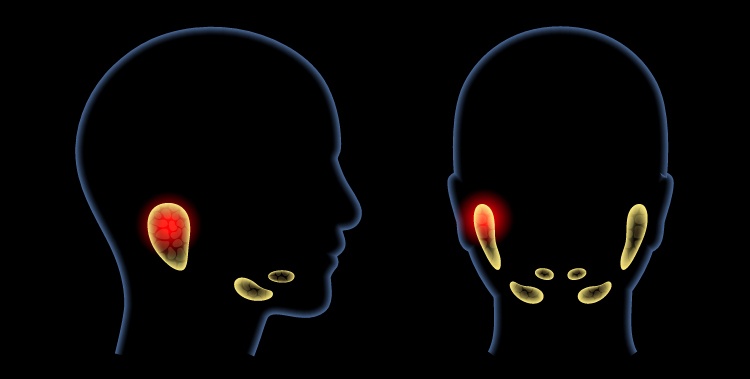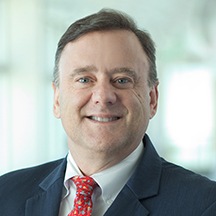

Sharmyn’s Story: Suffering with a Facial Tumor Ends
by Amelia Garrison
After suffering with intermittent facial swelling for several years, Pacific Neuroscience Institute’s own Sharmyn McGraw finally sought help from Head & Neck surgeon, Chester Griffiths, MD.
Sharmyn, a patient advocate leading PNI’s pituitary disorders support group for the past twenty years, said, “One of the issues was that the swelling would come and go. Dr. Griffiths got to the bottom of it, and identified it as an unusual swelling in my parotid gland. I had to have an MRI scan when my gland was swollen, and needed to get insurance pre-approval and schedule the scan all while the gland was swollen.”

Parotid tumors are typically benign (noncancerous) growths that form in the parotid glands located in front of the ear on each side of the face. Parotid glands, also known as salivary glands, produce saliva, which aids in chewing, swallowing, and digesting food. The glands are located in the lips, tongue, mouth, cheeks, nose, sinuses, and voice box (larynx).
“Thank goodness the team at Tower Imagining worked diligently to scan my gland when it was swollen,” said Sharmyn. “I was alarmed to see that the scan showed a deep tissue 3 cm tumor at the tail of the parotid gland under my facial nerves.”
When a parotid tumor forms, it can cause swelling of the face. Symptoms include facial numbness and even loss of facial movement. Treatment to remove a parotid gland tumor involves precision surgery called a parotidectomy requiring extreme precision due to the fact the facial nerve is nearby. The facial nerves control movements in the face, including the ability to smile and raise your eyebrows.
Paratoid Tumor Surgery

“Dr. Griffiths got me to surgery quickly,” Sharmyn recollected. “And what an amazing job he did! I have only a small incision on the side of my neck, and you can hardly see it just two weeks after surgery. And there was no pain at all. I took Tylenol but didn’t need it for pain.”
The good news was that the tumor was not cancerous. “I didn’t have any issues with my facial nerves and I’m feeling so much better,” continued Sharmyn. “Dr. Griffiths and his amazing team at the Pacific Head & Neck Center took such good care of me before and after the surgery. A huge thank you to all the staff from the reception to the nurses and anesthesiologist at Providence Saint John’s Health Center. And of course, thank you, Dr. Griffiths, for your expertise, kindness, and all your wonderful care. You helped turn a scary diagnosis into an easy recovery and a happy patient.”
Learn more about parotid tumor treatment at PNI’s Head & Neck program.
More information: 310-829-8701
About Dr. Chester Griffiths

Dr. Chester Griffiths, MD, FACS, is board certified in Otolaryngology, Head and Neck Surgery, and Facial Plastic and Reconstructive Surgery. He has 30 years of experience in endoscopic endonasal sinus surgery for skull base tumors and pituitary tumors, sinonasal cancers including mucosal melanomas, and in the treatment of facial and nasal trauma, cosmetic deformities, sinus infections, and disorders of smell and taste. His practice treats sleep apnea, snoring, difficulty breathing, disorders of the larynx, thyroid tumors, and other head and neck cancers with an emphasis on viral HPV-related cancers.
Useful Link
About the Author

Amelia Garrison
Amelia Garrison is the Marketing Specialist at Pacific Neuroscience Institute (PNI). Well versed in community outreach strategy and implementation, she leads the PNI blog, newsletter, and digital communications. Amelia oversees PNI's reputation management and community sponsorships.
Last updated: November 2nd, 2021